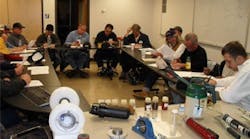Figure 1. The OilSafe bulk system is the heart of the new lube room.
This is the third installment of a bi-monthly series about one plant’s continuing journey to implement a world-class lubrication process.
Beer Guy here with another update. It’s a busy time at the beer factory — peak season ended a few months ago, and now we’re focusing on things we can do better in the coming year. I haven’t had time to fill and leak-check all the tanks in the new lube room, but five of the eight are now filled and set up to recirculate for eight hours each (Figure 1). I’m also making slow-but-steady progress in other aspects of our lubrication process implementation. In my last article, I promised you updates on the training program and our effort to clean up our incoming oil, and I’m ready to deliver.
Development of the lubrication management training course
A few months ago, I was asked to provide all the operations teams with classroom and hands-on training regarding lubrication best practices, behaviors, and how to actually apply them on the job. I was also asked to be the person who signs off on these new skills. I developed a training course that requires four hours of classroom training and four hours of hands-on training (Figure 2). I plan to follow up with the students a month later to review their skills before I sign off.
Figure 2. Maintenance and operations team members attended the lubrication management training course.
Since this type of internal training is relatively new to my facility, I recommended that all craftspeople attend the class first and make suggestions because, hey, I’m the first to admit I don’t know everything. Just because I have an MLA-2 and turned wrenches for 16 years doesn’t mean I know much compared to the hundreds of years of knowledge you’ll find in one room of people who’ve worked at our facility for decades. I’m happy to say management supported this idea, and, boy, was the process informative.
To date, about 75% of our maintenance teams and 40% of our operations teams have been through the training course. Even most of the managers took it to get a feel for what I was teaching. Feedback has been positive; a lot of people said they learned new things. But I learned that some of the topics I covered were over their heads and not needed. Good news: shorter classes.
Improving the cleanliness of incoming oil
I’m happy to report success in the area of incoming oil cleanliness. The major win was with one of the gear oils. A new drum arrived at 19/18/16, and, after an eight-hour recirculated filter job, we got down to 17/14/14. That’s a major difference.
In another instance, three new drums of hydraulic fluid were pretty darn clean when they arrived — close to 16/14/13. Hard to beat that. After eight hours of recirculating, they measured 16/14/12. A slight improvement, and about what I expected, but probably not worth the extra power I used for refiltering. So, lesson learned. I need to send out samples, wait for results, and then decide if we should try to improve the cleanliness. Since our new OilSafe lube station filters oil as it comes in and again on its way to the spout, I already get double filtration for all oil going to secondary containers. Seems we’re on the right path and moving forward once again.
The value of best practice lubrication management
Figure 3. Transfer containers make it simple to transfer lubricants.
Remember in my last article, when I said we’ve seen a jump in work notifications now that the teams on the floor have 3D sight glasses? Well, the number of work notifications has quadrupled since then. Every week now, I get 10 to 12 calls to come check something out and give a second opinion. I also get three to five weekly requests to sample something that doesn’t look right, and a couple calls from people wanting the OilSafe transfer containers and grease guns they saw in the training class (Figure 3). Keep in mind that I originally struggled to get these guys to let me put lube tags on the equipment and to invest in the OilSafe system. But now the calls keep coming in, and it feels great.
And the numbers don’t lie. Our OEE and ME numbers are on the rise. Breakdowns in most parts of the facility are down threefold and in some cases eliminated. It’s not a mystery anymore — when you train your folks on the lubrication problems to look for and how to correct them, things will always get better.
Looking ahead
In the first phase of our journey toward lubrication perfection, I introduced the OilSafe color-coded transfer containers, custom grease guns, bulk storage, custom lube tags, and custom grease caps. Now we’re in the trenches and really invested in training —something that’s long overdue — and we’re finally moving in the right direction.
So, I chug along, of course, still primarily responsible for preventing downtime. But because I dedicate two to three days a week to training, time for downtime prevention has become scarce. Luckily, my CBM team members have offered to help out and take on some of my routes until the end of the year while I push to get all the operators through the training course.
Stay tuned for my next article. I’m sure to have more success stories from our journey, as well as some new insight on getting buy-in from those who were initially resistant to the change in lubrication management. These folks want to get better, and we can help them. In the meantime, don’t forget: Nothing goes better with football than an ice-cold beer. So, drink up, but do so responsibly.
